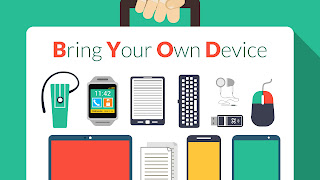Twitter Feed
One AWESOME Week of Cloud Computing
We just finished up five AWESOME days of cloud computing training with USAREUR in Schwetzingen, Germany ! CHECK IT OUT !! Create your own video slideshow at animoto.com. Sure we…
NGA Exploring “Community Cloud” With NCOIC
The National Geospatial-Intelligence Agency (NGA) is looking to leverage industry expertise through collaboration with the Network Centic Operations Industry Consortium (NCOIC). NGA provides timely, relevant and accurate geospatial intelligence in…
DoD, NASA and GSA Address Secure Cloud Computing
On Thursday, May 26th, the Federal Executive Forum featured three important Federal cloud computing leaders: David McClure- Associate Administrator, GSA Office of Citizen Services and Communications Col. Kevin Foster- Office of…
Cloud Computing Day at DoDIIS
I’m declaring Monday, May 24th, as Cloud Computing Day at DoDIIS. Lieutenant General Richard Zahner, Army Deputy Chief of Staff, G2, seemed to get things going with his video that…
Vivek Kundra – State of Public Sector Cloud Computing
Last week Federal Chief Information Officer Vivek Kundra release his report on the “State of Public Sector Cloud Computing”. The report not only details Federal budget guidance issued to agencies…
Cloud Computing at DoDIIS
Next week in Phoenix, AZ, the Defense Intelligence Agency will host the 2010 Department of Defense Intelligence Information Systems (DoDIIS) Worldwide Conference. The theme of this event is “Mission Powered…
Open Group Publishes Guidelines on Cloud Computing ROI
In an important industry contribution, The Open Group has published a white paper on how to build and measure cloud computing return on investment (ROI). Produced by the Cloud Business…
The Army’s iPhone Story
Sandra Erwin of National Defense magazine just published an excellent article on the Army’s foray into developing soldier-friendly smartphone applications. Giving credit to Army CIO Lt. Gen, Jeffrey Sorenson and…
Vivek Kundra Steps Up to Cloud Computing’s Next Challenge
” [C]loud customers must be able to easily store, access, and process data across multiple clouds; weave together a mesh of different services to meet their needs; and have a…
Cloud Computing’s Next Challenge
Earlier this month, Melvin Greer and I teamed up on a Military Information Technology piece. Melvin is a senior research engineer and cloud computing chief architect at Lockheed Martin, and…
- Increased employee mobility (63%), satisfaction (56%) and productivity (55%) dominate as the top drivers of BYOD. These employee related drivers are considered more important than reduced costs (47%).
- Security (39%) and employee privacy (12%) are the biggest inhibitors of BYOD adoption.
- 20% of surveyed organizations have suffered a mobile security breach, primarily driven by malware and malicious WiFi.
- Security threats to BYOD impose heavy burdens on organizations’ IT resources (35%) and help desk workloads (27%).
- Despite increasing mobile security threats, data breaches and new regulations, only 30% of organizations are increasing security budgets for BYOD in the next 12 months and 37% have no plans to change their security budgets.
- 72% – Data leakage/loss
- 56% – Unauthorized access to company data and systems
- 54% – Downloading of unsafe apps or content
- 52% – Malware
- 50% – Lost or stolen devices
- 49% – Vulnerability exploitation
- 48% – Lack of control on endpoint security
- 39% – Infrequent software updates
- 38% – Compliance
1. Create your policy before procuring technology: To effectively use mobile device management (MDM) technology for employee owned devices Policy must precede technology. Also note that these policies will have broad corporate-wide implications for IT, HR, legal, and security.
- Mobile device management
- Application security assessments
- Application testing services
- Application source code security assessments; and
- Embedded device security.
This post was brought to you by IBM Global Technology Services. For more content like this, visit ITBizAdvisor.com.
( Thank you. If you enjoyed this article, get free updates by email or RSS – © Copyright Kevin L. Jackson 2017)
Cloud Computing
- CPUcoin Expands CPU/GPU Power Sharing with Cudo Ventures Enterprise Network Partnership
- CPUcoin Expands CPU/GPU Power Sharing with Cudo Ventures Enterprise Network Partnership
- Route1 Announces Q2 2019 Financial Results
- CPUcoin Expands CPU/GPU Power Sharing with Cudo Ventures Enterprise Network Partnership
- ChannelAdvisor to Present at the D.A. Davidson 18th Annual Technology Conference
Cybersecurity
- Route1 Announces Q2 2019 Financial Results
- FIRST US BANCSHARES, INC. DECLARES CASH DIVIDEND
- Business Continuity Management Planning Solution Market is Expected to Grow ~ US$ 1.6 Bn by the end of 2029 - PMR
- Atos delivers Quantum-Learning-as-a-Service to Xofia to enable artificial intelligence solutions
- New Ares IoT Botnet discovered on Android OS based Set-Top Boxes


